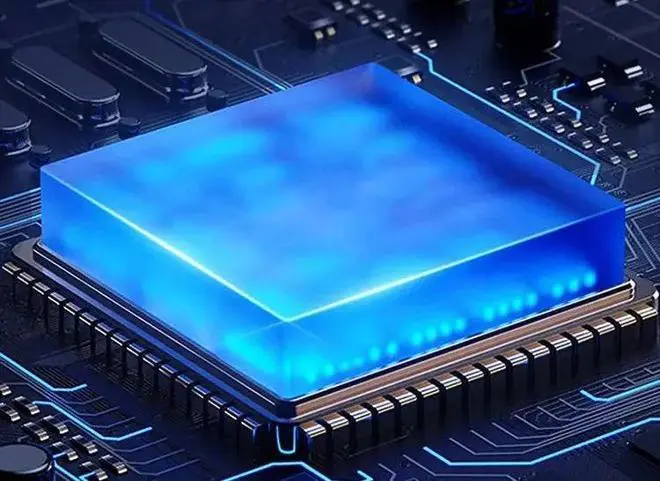nuus
Design and Development of an Industrial AC-DC Converter
Author: ZYG Power Module Time: 2023-5-4
Introduction
Industrial AC-DC converters are essential components in modern power electronics systems. They convert alternating current (AC) power from the grid to direct current (DC) power for use in various industrial applications. The design and development of an efficient industrial AC-DC converter require a thorough understanding of power electronics principles and a careful selection of components to ensure optimal performance. This article discusses the essential steps involved in the design and development of an industrial AC-DC converter.
Step 1: Determine the Specifications
The first step in the design process is to determine the specifications of the industrial AC-DC converter. The specifications should include the input voltage and frequency, output voltage and current, power rating, and efficiency requirements. These specifications will guide the selection of components and the design of the converter.
Step 2: Select the Components
The selection of components is critical in the design of an efficient industrial AC-DC converter. The components include the rectifier, filter, and regulator circuits. The rectifier circuit converts the AC voltage to DC voltage. The filter circuit removes the high-frequency noise and ripple from the DC voltage. The regulator circuit regulates the output voltage to the desired level.
The rectifier circuit can be implemented using a diode bridge or a thyristor bridge. The diode bridge is simpler and cheaper, but it has higher losses and lower efficiency compared to the thyristor bridge. The filter circuit can be implemented using a capacitor or an inductor. The capacitor filter is simpler and cheaper, but it has high ripple voltage and low efficiency compared to the inductor filter. The regulator circuit can be implemented using a linear regulator or a switch-mode regulator. The linear regulator is simpler and cheaper, but it has high losses and low efficiency compared to the switch-mode regulator.
Step 3: Design the Circuit
The circuit design involves the selection of component values and the calculation of circuit parameters based on the specifications. The design should ensure that the circuit operates within the specified input voltage and frequency ranges and produces the desired output voltage and current. The design should also ensure that the circuit meets the efficiency and power rating requirements.
The circuit design should consider the thermal management of the components to prevent overheating and ensure long-term reliability. The design should also consider the electromagnetic interference (EMI) and electromagnetic compatibility (EMC) requirements to prevent interference with other electronic devices.

Step 4: Prototype and Test
After the circuit design, the next step is to build a prototype of the industrial AC-DC converter and test its performance. The prototype should be tested under various operating conditions to ensure that it meets the specifications and performance requirements. The tests should include input voltage and frequency variations, load variations, and temperature variations.
The test results should be analyzed to identify any design flaws and improve the design. The thermal management and EMI/EMC performance of the prototype should also be evaluated and improved as necessary.
Step 5: Final Design and Production
After the prototype testing, the final design of the industrial AC-DC converter can be optimized based on the test results. The final design should incorporate any improvements identified during the prototype testing. The optimized design should be documented and verified.
The production of the industrial AC-DC converter can then proceed, using the optimized design. The production process should ensure that the final product meets the specifications, performance requirements, and quality standards. The production process should also ensure that the product is reliable and cost-effective.
Afsluiting
The design and development of an industrial AC-DC converter require a thorough understanding of power electronics principles and a careful selection of components to ensure optimal performance. The design process involves determining the specifications, selecting the components, designing the circuit, prototyping and testing, and finalizing the design for production. The final product should meet the specifications, performance requirements, and quality standards while being reliable and cost-effective.
vorige: AC-DC Power Supply: A Reliable Solution for Your Electrical Needs
volgende: Designing an AC-DC Converter Circuit
relevante inligting
-
2024-7-19
PD Fast Charging Technology: A New Charging Standard for Modern Life
In today's fast-paced life, fast charging technology has become an indispensable part of our daily lives. Among them, PD (Power Delivery) fast charging technology, with its high efficiency and safety, has gradually become the mainstream choice in the market. This article will explore the principles, advantages, and future development trends of PD fast charging technology. Advantages of PD Fast Charging Technology High power transfer: PD fast charging technology supports higher charging power, up to 100W or more, which can meet the fast charging requirements of various electronic devices. This high power transmission capability allows users to fully charge their devices in a short time, improving the efficiency and convenience of charging. Intelligent adjustment: PD fast charging technology makes the charging...
Sien besonderhede -
2023-5-19
Transforming 12V AC to 12V DC: Building an Effective LED Converter
Converting voltage sources is a common electrical engineering task. Unfortunately, not all voltage sources are compatible with the devices that require them. That's where voltage converters come in. Voltage converters allow the transformation of voltage from one source and provide it to devices that need different voltage levels. Among such voltage converters is an LED converter, which allows the transformation of AC voltage to DC voltage for powering LED lights. In this article, we’ll explore tips on building an effective LED converter that turns 12V AC voltage to12V DC voltage output. Firstly, when preparing to build an effective LED converter, it is important to mention that an LED can convert up to only 2 volts to light, thus making it...
Sien besonderhede -
2023-6-12
HP Series AC DC Converter: High-Performance Power Conversion Solution
The HP Series AC DC Converter is a high-performance power conversion solution designed for a variety of industrial applications. This innovative product is manufactured by a leading company in the power electronics industry and is a testament to their commitment to providing reliable and efficient solutions for their customers. One of the standout features of the HP Series AC DC Converter is its high efficiency. With a conversion efficiency of up to 96%, this product is highly efficient and can save users a significant amount of energy and money over time. This is particularly important in industrial settings where energy costs can be a major expense. Another key feature of the HP Series AC DC Converter is its wide input...
Sien besonderhede -
2023-5-9
Designing an Efficient Industrial AC-DC Converter
In modern industrial applications, AC-DC converters play a significant role in transforming electrical power between different voltage levels and frequencies. These converters are essential for powering a wide range of devices, from small electronic circuits to heavy machinery. With the increasing demand for more efficient and reliable power supplies, it is essential to design AC-DC converters that can meet the requirements of industrial applications. The efficiency of an AC-DC converter is a critical factor that determines its performance. Higher efficiency means that less power is dissipated as heat, resulting in lower operating temperatures and longer device lifetimes. To achieve high efficiency, designers must consider several factors, including power factor correction, switching frequency, and topology. Power factor correction (PFC) is a...
Sien besonderhede -
2023-7-12
Exploring the Functionality of Bidirectional Converters in English
Introduction In recent years, bidirectional converters have gained significant attention in the field of electronics and power systems. These converters play a crucial role in enabling power flow in both directions, allowing for efficient energy management and conversion. This article aims to explore the functionality of bidirectional converters in the English language, highlighting their importance and applications. Understanding Bidirectional Converters Bidirectional converters, also known as bi-directional power converters, are electronic devices that facilitate the flow of power in two directions. Unlike traditional converters, which only allow power flow in one direction, bidirectional converters ensure efficient energy transfer between sources and loads. This bidirectional functionality makes them ideal for various applications, including renewable energy systems, electric vehicles, and energy storage systems....
Sien besonderhede -
2023-8-2
Efficient AC to DC Converter for LED Lighting with 12V Output
Introduction: In recent years, LED lighting has gained popularity due to its energy efficiency and long lifespan. To power these LED lighting systems, an efficient AC to DC converter is required to convert the alternating current (AC) from the power source to the direct current (DC) needed by the LEDs. This article explores the importance of an efficient AC to DC converter for LED lighting and presents a detailed analysis of a converter with a 12V output. Advantages of LED Lighting: Before delving into the AC to DC converter, it is essential to understand the advantages of using LED lighting. LEDs are renowned for their energy efficiency, consuming significantly less energy compared to traditional incandescent bulbs. Additionally, LEDs have a...
Sien besonderhede


















